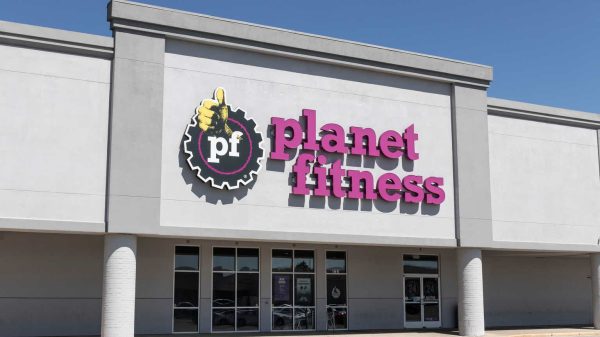Investing.com — Another week of U.S. crude and fuel draws and lackluster oil prices instead, as the market stays fixated with rate hike worries rather than healthy summer demand for energy.
Crude inventories fell for a third week in a row in the United States while stockpiles of gasoline and distillates shrank too, the Energy Information Administration, or EIA, said in its Weekly Petroleum Status Report.
New York-based , or West Texas Intermediate, settled up just one penny at $71.80 per barrel. The U.S. crude benchmark fell as much as 2% earlier, hitting a session bottom of $70.23, before recouping losses on the back of the positive EIA report on supply-demand.
London-based showed a drop of 3 cents to $76.62 by 14:40 ET (18:40 GMT). The global crude benchmark earlier sank to an intraday low of $75.05.
“To be fair, the EIA issued a report in line with the healthy summer demand for travel and energy but all that was sidelined by concerns that the Fed will likely hike rates again when it meets in three weeks,” said John Kilduff, partner at New York energy hedge fund Again Capital.
The U.S. fell by 1.508 million barrels during the week ended June 30, the EIA said in its Weekly Petroleum Status Report.
In the prior week to June 23, the EIA reported a drawdown of 9.603M barrels, which was the largest of its kind in three months.
The latest crude pull from storage was still higher than the 0.983M forecast on the average by industry analysts tracked by Investing.com.
The crude draw reported by the EIA also came with a usual caveat: The release of 1.5M barrels from the U.S. Strategic Petroleum Reserve, that if added to the headline draw would translate to a total crude inventory decline of around 3M barrels.
On the front, the EIA reported a draw of 2.55M barrels for last week. Analysts had expected the agency to cite a draw of 1.417M barrels instead, versus the prior week’s build of 0.603M barrels. Automotive fuel gasoline is the No. 1 U.S. fuel product. Total gasoline product supplied to the market — a measure of demand at the pump — was at a relatively high 9.6M barrels per day last week.
With , the EIA reported a decline of 1.045M barrels. Analysts had forecast a build of 0.296M barrels instead, to add to the previous gain of 0.124M. Distillates are refined into , diesel for trucks, buses, trains and ships, and fuel for jets.
Early jobs estimates signal another imminent Fed hike
Fear that the Fed will bump up rates again this month grew after payroll processing firm said Thursday that private employers in the United States added nearly 500,000 jobs in June. The number appeared certain to raise eyebrows among officials at the central bank who are eyeing a less dynamic jobs report from the Labor Department later this week to affirm an easing in inflation.
Wall Street’s economists on the average expect the Labor Department’s report on Friday to cite a jobs growth of around 225,000 for last month, versus May’s 339,000.
Ahead of that, ADP reported that employers outside the public sector added 497,000 positions in June, on top of the 267,000 the prior month.
The Fed is hoping for a softer jobs growth in June that would aid its efforts in fighting inflation. The Personal Consumption Expenditures, or , Index — an inflation indicator closely followed by the Fed — grew 3.8% in the year to May. , a component of the index stripped of volatile food and energy prices, expanded by 4.6%. The Fed’s tolerance for inflation is a mere 2% per annum.
The central bank has raised by 5% since the end of the coronavirus outbreak in March 2022, bringing them to a peak of 5.25% in an attempt to bring inflation back to its targeted level. The Fed skipped a rate hike in June for the first time in more than a year but is expected to resume its monetary tightening at its July 26 rate decision with another 0.5% hike.
“Consumer-facing service industries had a strong June, aligning to push job creation higher than expected,” Nela Richardson, chief economist at ADP, said in the payroll processor’s report. “But wage growth continues to ebb in these same industries, and hiring likely is cresting after a late-cycle surge.”
The labor market is the juggernaut of the U.S. economy, adding hundreds of thousands of jobs a month over the past three years after initially losing 20M to the COVID-19 pandemic.
While policy-makers the world over typically celebrate on seeing good jobs numbers, the Fed is in a different predicament. The central bank wishes to see an easing of conditions that are a little “too good” now for the economy’s own good — in this case, unemployment at more than 50-year lows and average monthly wages that have grown without stop since March 2021.
Such job security and earnings have cushioned many Americans from the worst price pressures since the 1980s and encouraged them to continue spending, further feeding inflation.
The Fed has a mandate of ensuring “maximum employment” through a jobless rate of 4% or below, and keeping inflation “manageable”. The last was a task easily achieved before the COVID-19 breakout, when prices expanded less than 2% a year. The pandemic and the trillions of dollars of relief spending by the government, however, triggered runaway inflation since mid-2021.
Read the full article here













